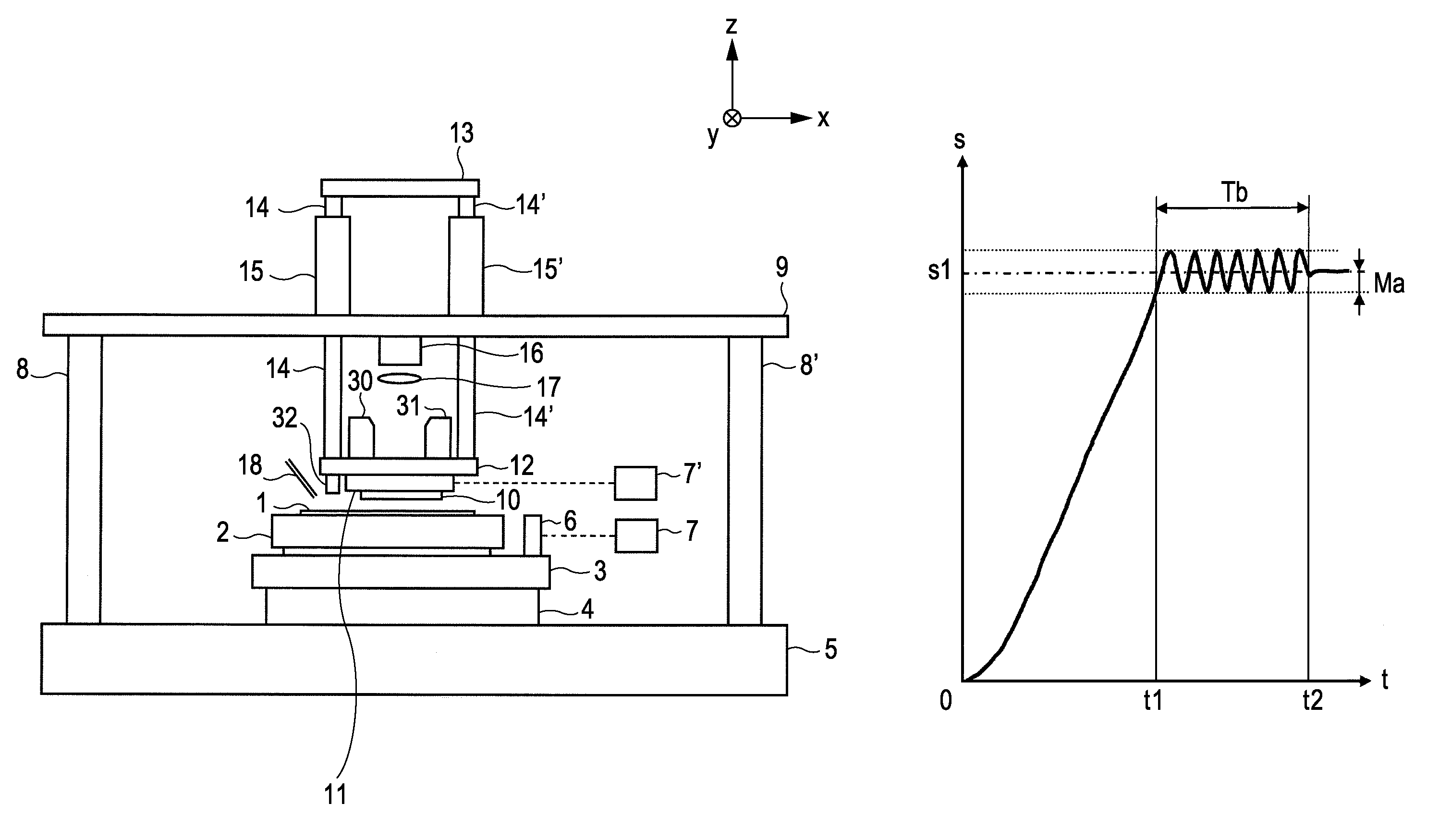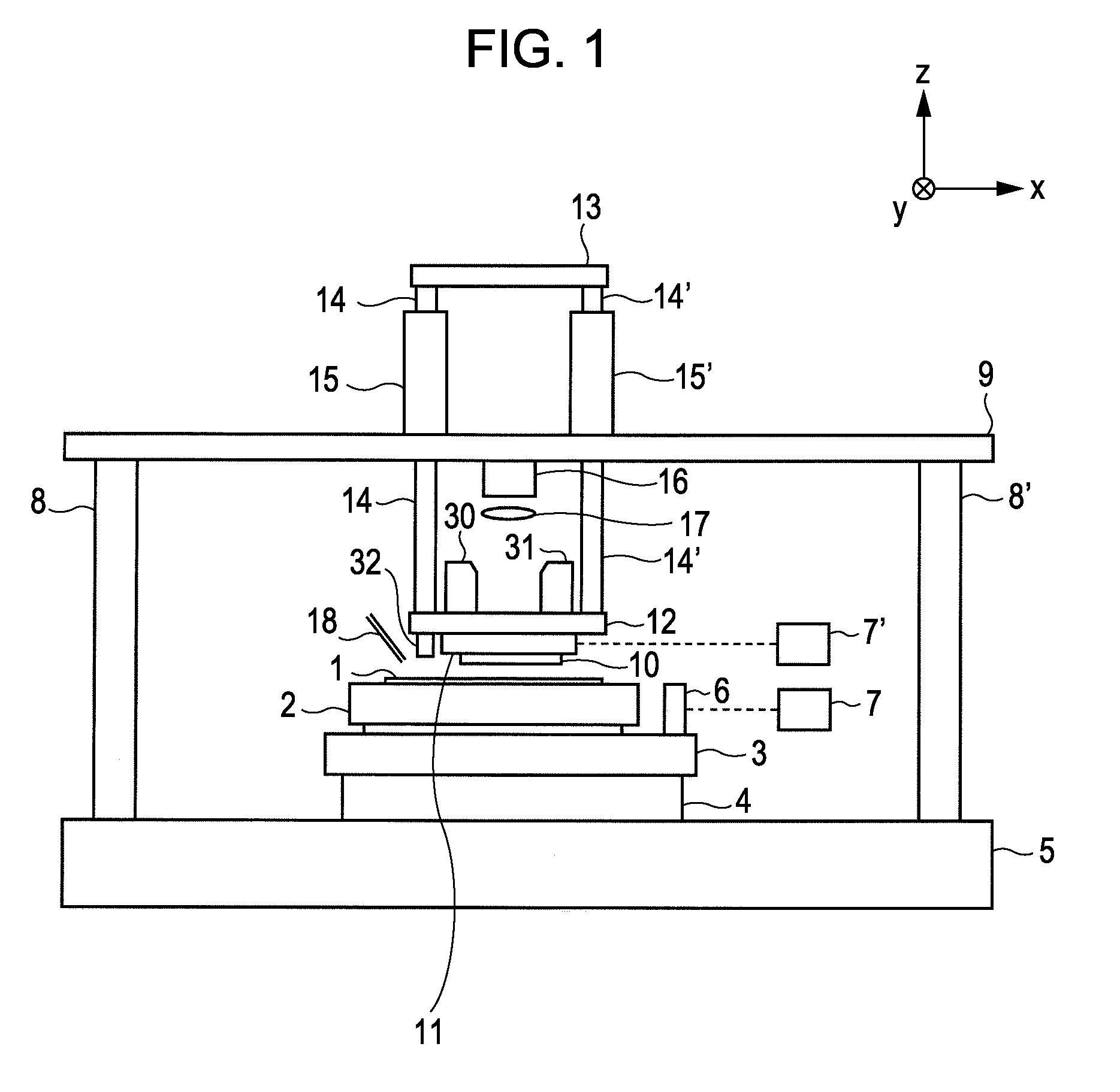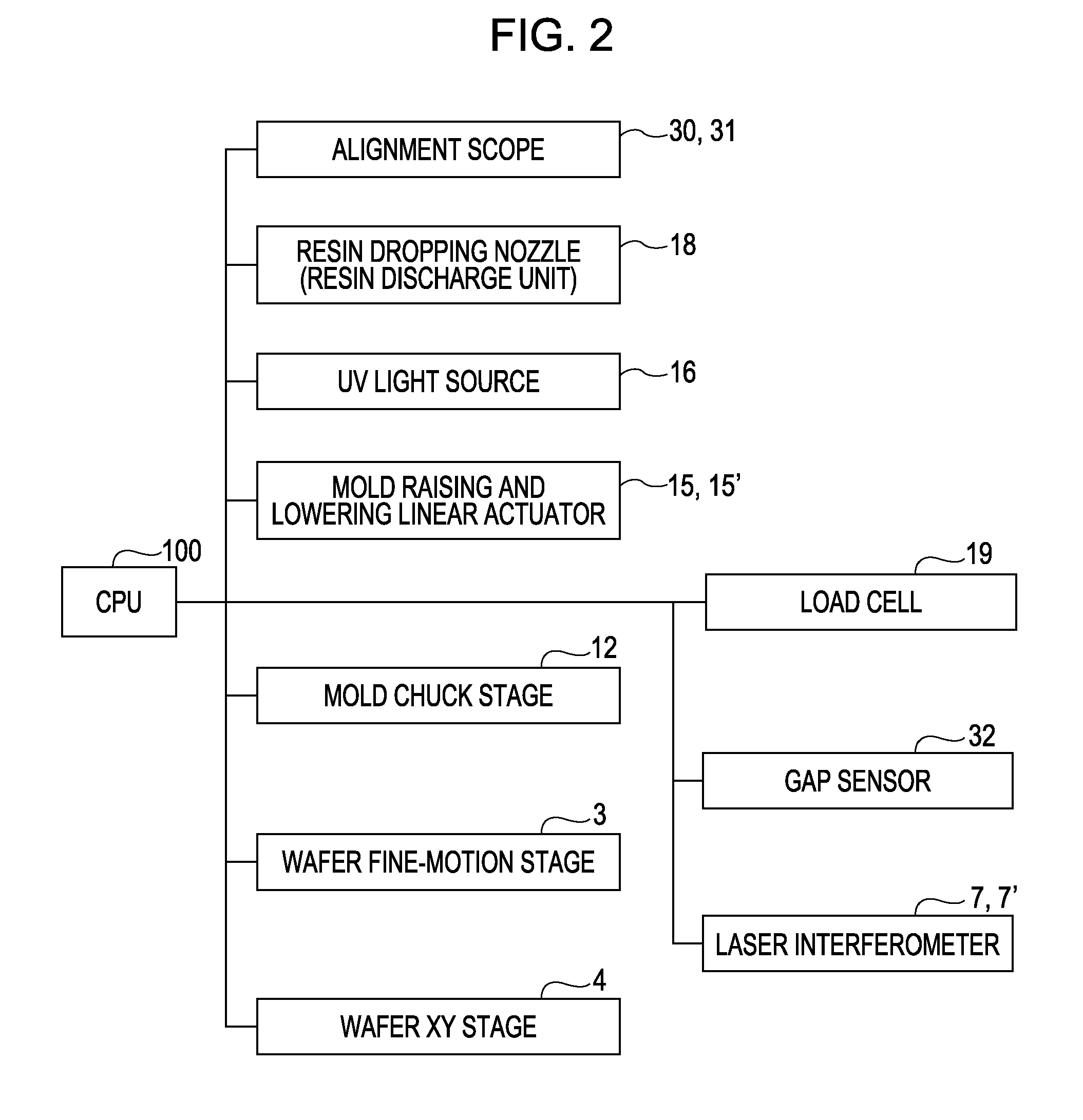Imprint apparatus and article manufacturing method
a technology of printing apparatus and printing method, which is applied in the field of printing apparatus, can solve the problems of reducing the throughput of pattern printing apparatus, difficult alignment after pressing the mold, and prone to unfixed relative positions of the mold and the substrate, and achieves the effect of improving throughpu
- Summary
- Abstract
- Description
- Claims
- Application Information
AI Technical Summary
Benefits of technology
Problems solved by technology
Method used
Image
Examples
first embodiment
[0043]FIG. 4 is a flowchart of pattern transfer to a wafer 1 in the present invention and corresponds to step S107 of FIG. 11. This flowchart differs from the conventional flowchart of FIG. 15 in that steps (S31 and S32) are added in which the vibrating of the wafer stage 3, 4 (the fine-motion stage 3 and the XY stage 4) is started and stopped.
[0044]With reference to FIGS. 1, 2, and 4, a description will be given of the operation of an imprint apparatus according to a first embodiment of the present invention. Reference is made to FIG. 4. First, in step S1, the XY stage 4 is driven and the wafer chuck 2 on which a wafer 1 is placed is moved so that a place (shot) on the wafer 1 to which a pattern is transferred is located under the resin dropping nozzle 18. In step S2, light cure resin is dropped onto the target shot on the wafer 1 by the resin dropping nozzle 18.
[0045]Next, in step S3, the XY stage 4 is driven so that the plane of the shot is located opposite the pattern P2 of the ...
second embodiment
[0053]Next, with reference to FIGS. 7 and 8, a description will be given of the operation of a pattern transfer apparatus according to the present invention. FIG. 7 is a flowchart of pattern transfer to a wafer 1. This flowchart differs from the flowchart of FIG. 4 in that a step is added in which the vibration amplitude of the wafer stage is changed when the amount of pressing (the amount of lowering) of the mold 10 reaches a predetermined value. In FIG. 7, steps S1 to S4 (lowering of the mold chuck) are the same as those of FIG. 4.
[0054]The flow branches at step S41. In one of the branches, the determination whether or not the pressing force is appropriate (step S5) and the adjustment therefor (step S6) are the same as those of FIG. 4. In the other branch, in step S42, determination is repeated until the amount of lowering of the mold chuck 11 (the amount of pressing of the mold 10) reaches a predetermined value. When the amount of pressing of the mold 10 reaches the predetermined...
third embodiment
[0056]Next, with reference to FIGS. 9 and 10, a description will be given of the operation of a pattern transfer apparatus according to the present invention. FIG. 7 is a flowchart of pattern transfer to a wafer 1. This flowchart differs from the flowchart of FIG. 4 in that a step is added in which the vibration amplitude of the wafer stage is changed when the pressing force of the mold 10 reaches a predetermined value. In FIG. 9, steps S1 to S4 (lowering of the mold chuck) are the same as those of FIG. 4.
[0057]The flow branches at step S51. In one of the branches, the determination whether or not the pressing force is appropriate (step S5) and the adjustment therefor (step S6) are the same as those of FIG. 4. In the other branch, in step S52, determination is repeated until the pressing force of the mold 10 measured by the plurality of load cells 19 reaches a predetermined value. When the pressing force of the mold 10 reaches the predetermined value (YES in step S52), step S33 is p...
PUM
| Property | Measurement | Unit |
|---|---|---|
| frequency | aaaaa | aaaaa |
| distance | aaaaa | aaaaa |
| force | aaaaa | aaaaa |
Abstract
Description
Claims
Application Information
 Login to View More
Login to View More - R&D
- Intellectual Property
- Life Sciences
- Materials
- Tech Scout
- Unparalleled Data Quality
- Higher Quality Content
- 60% Fewer Hallucinations
Browse by: Latest US Patents, China's latest patents, Technical Efficacy Thesaurus, Application Domain, Technology Topic, Popular Technical Reports.
© 2025 PatSnap. All rights reserved.Legal|Privacy policy|Modern Slavery Act Transparency Statement|Sitemap|About US| Contact US: help@patsnap.com



